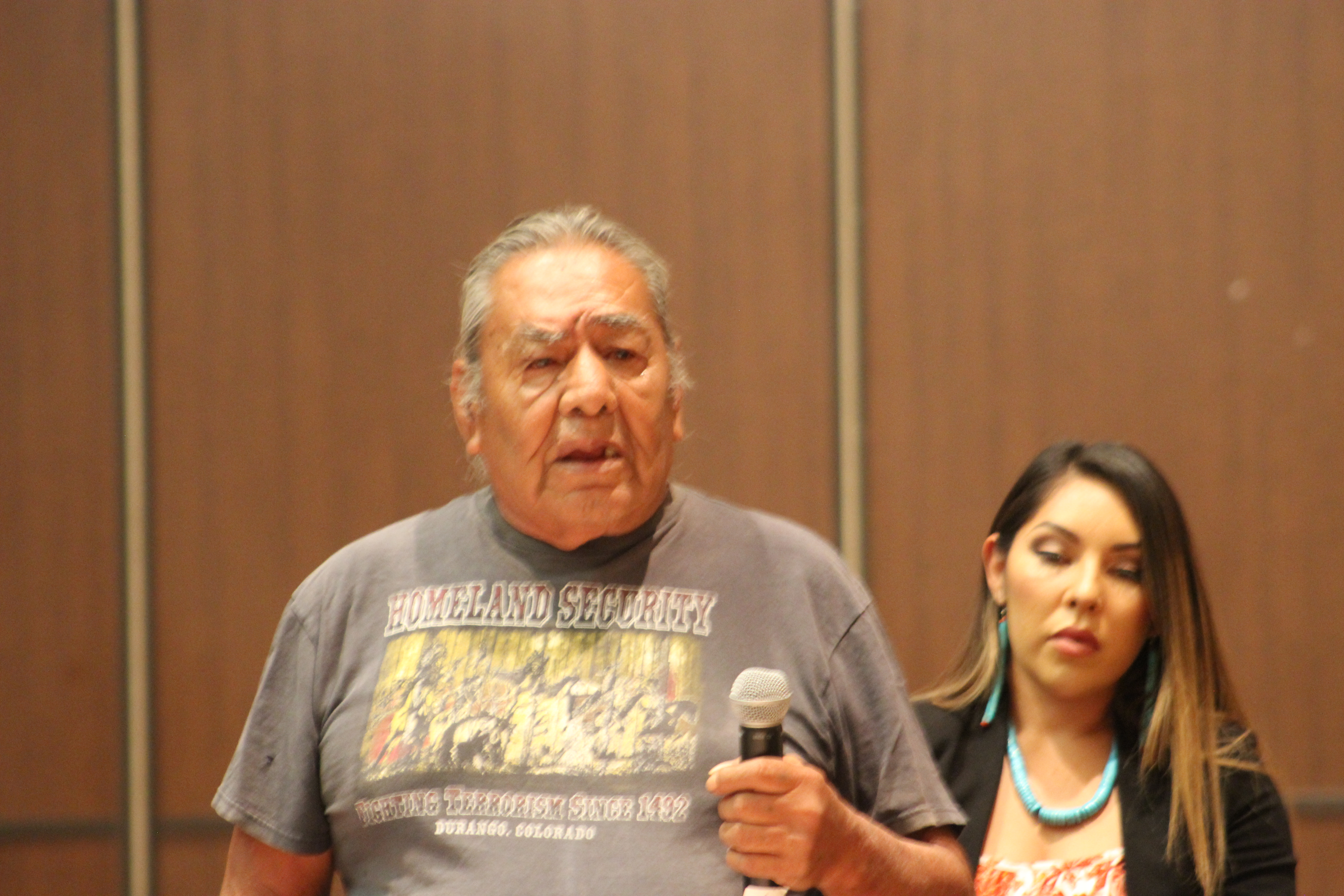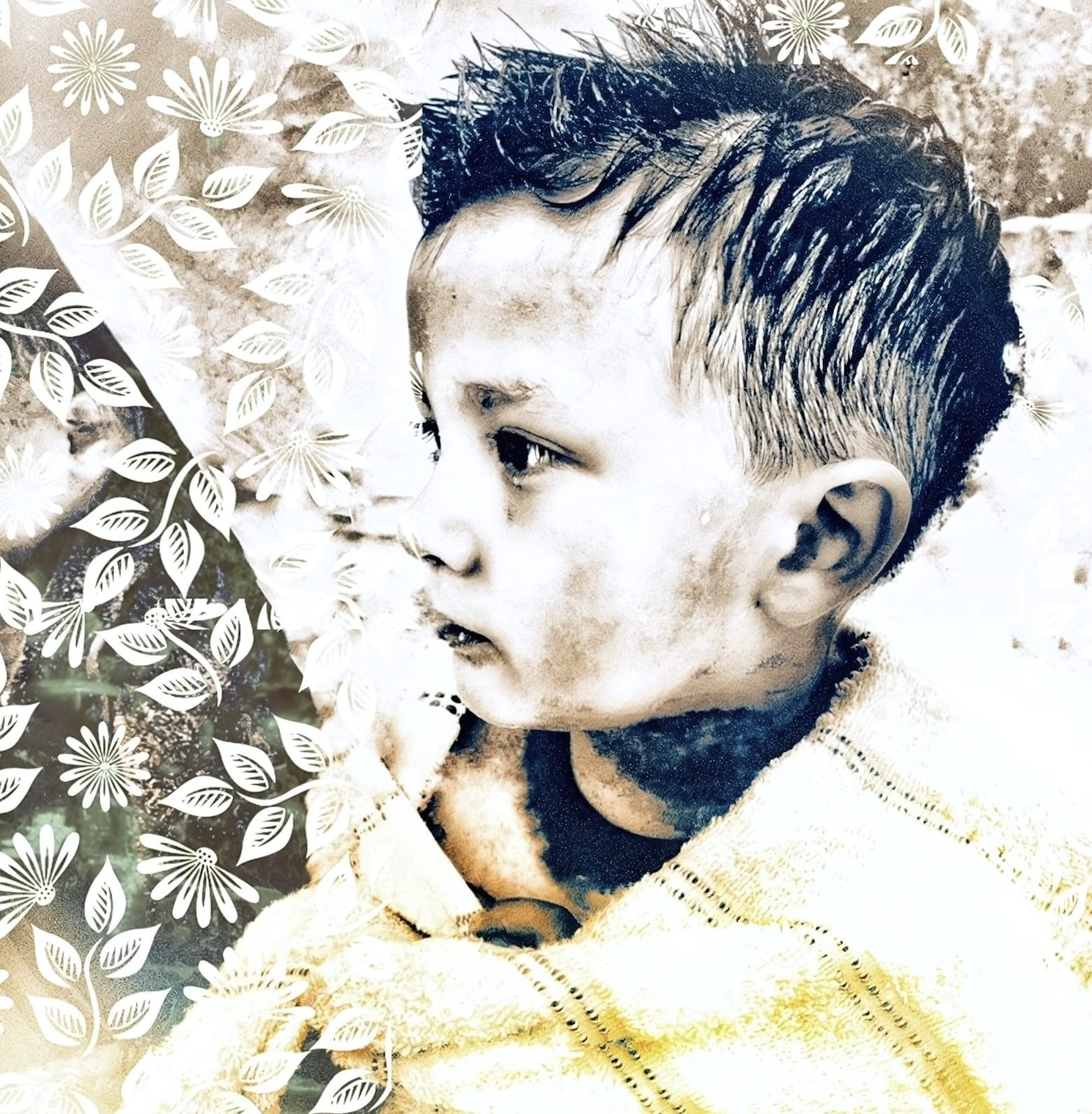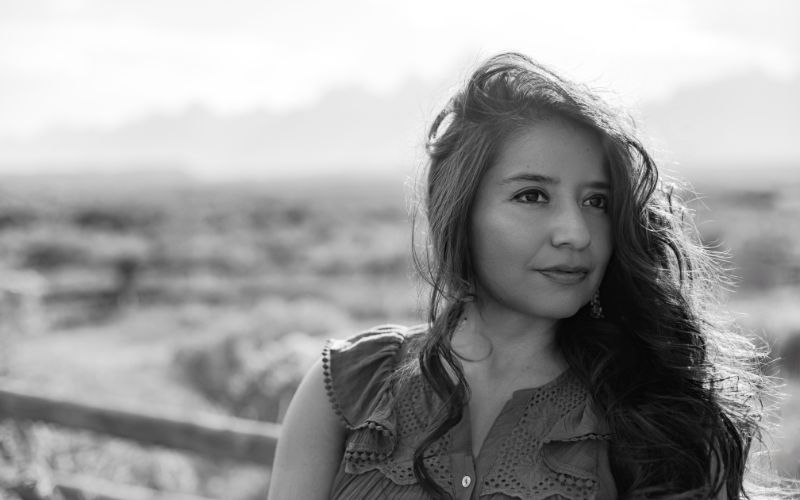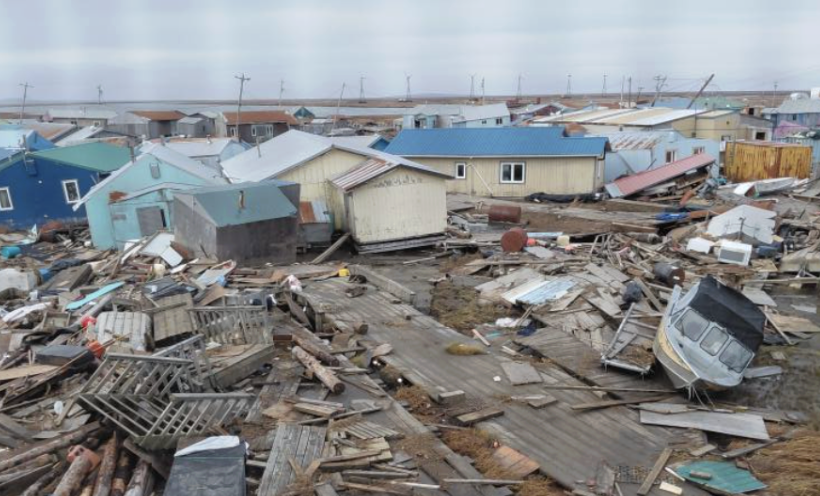
- Details
- By Levi Rickert
ALBUQUERQUE – U.S. Secretary of the Interior Deb Haaland (Laguna Pueblo) returned to her hometown of Albuquerque, New Mexico for a listening session on the 11th stop of The Road to Healing on Sunday. Before serving as Interior secretary, Haaland represented New Mexico’s 1st congressional district, which included Albuquerque in the U.S. House of Representatives.
Her task was different on Sunday. She was there with Assistant Secretary - Indian Affairs Bryan Newland (Bay Mills Indian Community) to hear testimony from survivors of the federal Indian boarding school system and their descendants.
Assistant Secretary Bryan Newland and Interior Secretary Deb Haaland
"I'm so happy to be back home and be with all of you this morning. As we embark on this journey together, it's an honor to join with you on the ancestral homeland," Haaland said.
Sunday’s listening session was one piece of the Interior Department’s collaborative efforts to address the intergenerational impact of federal Indian boarding schools and to promote spiritual and emotional healing in tribal communities.h e
Among the crowd were various leaders from several New Mexico pueblos. Also in attendance was Tunica-Buloxi Chairman Marshall Pierite, from Marksville, Louisiana.
Pierite, who is running for president of the National Congress of American Indians (NCAI), said he felt it was important to come to hear firsthand the Indian boarding school stories from the survivors and their families.
"It was very important to hear the truth of what happened in these baording schools. I am very proud of Secretary Haaland having these hearings because this is what will begin the healing process," Pierite told Native News Online.
Tunica-Buloxi Tribe Chairman Marshall Pierite with Stehpanie Poston and Jenni Monet.
On Sunday, Isidore Jaramillo (Isleta Pueblo), 77, recounted his story of attending the Albuquerque Indian Boarding School seven decades later. He told the story of one of the employees of the boarding school who took showers with the boys who attended the school.
Jaramillo said one evening, the employee invited him, when he was seven-years-old, to his room. The man offered him some wine.
“He stood up and grabbed me. He started to kiss me and I never was kissed like that before. We fell to the bed and I couldn’t breathe. I tried to get away. Just then, the bell rang. I had to be back to my room for the nightly bed call. He let me go and told me not to say anything about it,” Jaramillo testified.
“It was the worst experience of my life,” Jaramillo said.
“To this day, I can’t get that event out of my head,” Jaramillo told Native News Online in an interview. “I think about it every day of my life.”
Since July 2022, Haaland and Newland made stops in Anadako, Oklahome; Pellston, Michigan; Rosebud, South Dakota; Gila River Indian Community, Arizona; Many Farms, Arizona; Tulalip Indian Reservation, near Seattle, Washington; Onamia, Minnesota; Riverside and Rohnert Park, California; and Anchorage, Alaska.
The final Road to Healing tour listening session will take place in Bozeman, Montana next Sunday, Nov. 5, 2023.
More Stories Like This
Native News Weekly (August 25, 2024): D.C. BriefsUS Presidents in Their Own Words Concerning American Indians
Oral History Project Announces 14th Stop in Portland, Oregon: NABS Continues to Gather Crucial Stories Across Indian Country
Time to Fall Back: Turn Clocks Back for Sunday Time Change
Two Federal Judges Rule U.S. Government Must Spend $6 Billion on Food Aid Amid Shutdown
Help us tell the stories that could save Native languages and food traditions
At a critical moment for Indian Country, Native News Online is embarking on our most ambitious reporting project yet: "Cultivating Culture," a three-year investigation into two forces shaping Native community survival—food sovereignty and language revitalization.
The devastating impact of COVID-19 accelerated the loss of Native elders and with them, irreplaceable cultural knowledge. Yet across tribal communities, innovative leaders are fighting back, reclaiming traditional food systems and breathing new life into Native languages. These aren't just cultural preservation efforts—they're powerful pathways to community health, healing, and resilience.
Our dedicated reporting team will spend three years documenting these stories through on-the-ground reporting in 18 tribal communities, producing over 200 in-depth stories, 18 podcast episodes, and multimedia content that amplifies Indigenous voices. We'll show policymakers, funders, and allies how cultural restoration directly impacts physical and mental wellness while celebrating successful models of sovereignty and self-determination.
This isn't corporate media parachuting into Indian Country for a quick story. This is sustained, relationship-based journalism by Native reporters who understand these communities. It's "Warrior Journalism"—fearless reporting that serves the 5.5 million readers who depend on us for news that mainstream media often ignores.
We need your help right now. While we've secured partial funding, we're still $450,000 short of our three-year budget. Our immediate goal is $25,000 this month to keep this critical work moving forward—funding reporter salaries, travel to remote communities, photography, and the deep reporting these stories deserve.
Every dollar directly supports Indigenous journalists telling Indigenous stories. Whether it's $5 or $50, your contribution ensures these vital narratives of resilience, innovation, and hope don't disappear into silence.
 The stakes couldn't be higher. Native languages are being lost at an alarming rate. Food insecurity plagues many tribal communities. But solutions are emerging, and these stories need to be told.
The stakes couldn't be higher. Native languages are being lost at an alarming rate. Food insecurity plagues many tribal communities. But solutions are emerging, and these stories need to be told.
Support independent Native journalism. Fund the stories that matter.
Levi Rickert (Potawatomi), Editor & Publisher

















